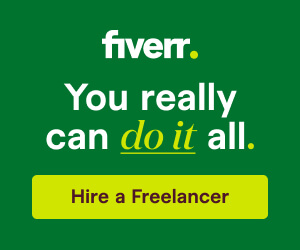Setting your first freelance rates feels like walking a tightrope without a net. Charge too much and clients disappear; charge too little and resentment builds. After helping hundreds of new freelancers price their services, I’ve identified concrete pricing strategies that work for beginners across different fields. These numbers come from real freelancers who landed clients while still building their portfolios.
Writing services show clear pricing patterns for newcomers. Blog post writing typically starts at $0.08 to $0.12 per word for beginners with minimal samples. A 1000-word article would therefore range from $80 to $120. Content mills might offer half that rate, but independent clients pay better even for new writers. One client shared they happily paid $100 per article to a beginner because the writer specialized in their niche and showed three solid writing samples.
Graphic design pricing depends heavily on project complexity. Simple social media graphics start around $15 to $25 per image for designers with basic skills. A full set of ten cohesive Instagram posts might go for $150 to $200. Logo design presents a wider range – $50 to $150 for beginners, with the higher end requiring multiple concepts and revisions. A recent design school graduate reported charging $75 for her first five logos, then gradually increased to $150 as her portfolio grew.
Web development beginners face an interesting pricing landscape. Basic WordPress site setup typically runs $300 to $500 for someone just starting out. Adding custom themes or plugins might push this to $800. One self-taught developer shared his journey from charging $400 for his first site to $1200 for similar work six months later. The key was documenting each project’s challenges and solutions to demonstrate increasing expertise.
Virtual assistant services show consistent hourly rates. Beginners typically charge $12 to $18 per hour for general administrative tasks. Specialized services like email management or calendar coordination might reach $20. A stay-at-home parent building a VA business reported starting at $15/hour, then increasing to $25 after completing several successful client projects and receiving testimonials.
Photography pricing varies by usage rights. Beginner event photographers might charge $50 to $75 per hour with a two-hour minimum. Selling photos individually changes the math – $10 to $25 per image for small business use. A college student shared how she built her portfolio by charging $60/hour for local band performances, then doubled her rates after getting published in a music blog.
Translation services command surprising rates even for newcomers. Common languages like Spanish or French typically pay $0.08 to $0.12 per word for beginners. A 1000-word document would therefore earn $80 to $120. One bilingual freelancer reported starting at $0.10/word, then increasing to $0.15 after completing specialized legal translation courses.
Video editing has become increasingly valuable. Simple cutting and splicing for small businesses starts around $25 to $50 per finished minute. More complex edits with effects and color grading might reach $75 to $100 per minute. A film school student shared his strategy of charging $30/minute for his first five projects, then increasing as he could show before-and-after samples of his work.
Social media management follows predictable pricing structures. Beginners typically charge $150 to $300 per month for managing two to three posts weekly across platforms. This includes basic content creation and engagement monitoring. One marketing student landed her first client at $200/month, then increased to $350 after demonstrating follower growth and engagement increases.
Consulting services allow for premium pricing even without extensive experience. Recent graduates in fields like marketing or finance can charge $40 to $60 per hour for specialized knowledge. A business major reported charging $50/hour for helping local shops with Instagram ads, despite having no formal work experience beyond classroom projects.
Voiceover work shows clear entry-level ranges. Beginners typically earn $25 to $50 per finished minute for commercial work. Corporate narration might pay slightly less at $20 to $40 per minute. An aspiring voice actor shared how she built her demo reel by charging $30/minute for local radio spots, then tripled her rates after landing agency representation.
The common thread across these fields is value-based progression. Beginners who deliver quality work and document their results can increase rates faster than they expect. One freelancer summarized it perfectly: “My first client paid $15/hour for work I now charge $50/hour to do. But that first client got a steal – they received $50/hour quality at beginner prices because I was hungry to prove myself.”
Pricing psychology plays a crucial role in landing those first clients. Round numbers like $100 feel more professional than $97. Package pricing (three blog posts for $300) often works better than itemized rates. And always present rates confidently, without apologies or justification – your skills have value regardless of experience level.
Seasoned freelancers advise tracking time meticulously on early projects. What seems like a quick $100 job might consume ten hours, revealing an effective $10/hour rate. This data becomes invaluable for adjusting future pricing. One web designer shared how timing his projects revealed he needed to charge triple his initial rates to earn a sustainable income.
The transition from beginner to intermediate pricing typically happens after five to ten successful projects. At this point, freelancers report feeling confident doubling their initial rates while still attracting clients. The key differentiator becomes specialization – generalists compete on price, while specialists command premium rates.
Testimonials and case studies accelerate rate increases more than anything else. A simple document showing “Client X saw 25% more website traffic after my blog posts” justifies higher pricing better than years of vague experience. Smart beginners collect these success stories from their very first projects.
Industry benchmarks provide useful guardrails but shouldn’t dictate your exact pricing. A copywriter might discover she can charge above-market rates for medical content because of her nursing background. These unique value propositions separate thriving freelancers from those stuck competing on price alone.
The most successful beginners treat their first projects as paid portfolio builders. They deliver exceptional value at lower rates while documenting everything for future clients. This mindset transforms early freelance work from underpaid drudgery to strategic investments in their business’s future.
Hourly versus project-based pricing presents an important early decision. Most experienced freelancers recommend project fees once you can estimate work accurately. One developer shared how switching from $25/hour to $500 per website tripled his income while reducing client disputes over billing hours.
Geographic considerations increasingly matter less in our connected world. A virtual assistant in Manila can charge comparable rates to one in Minneapolis if they deliver similar quality. The internet has flattened traditional geographic pricing barriers in most freelance fields.
Imposter syndrome sabotages more beginner rates than actual client resistance. Most freelancers report wishing they’d charged more sooner. The clients who value quality over price often become your best long-term partners anyway. One graphic designer shared her regret at staying at $25/design for a year before realizing clients would happily pay $50.
The sweet spot for beginner pricing lands between what feels comfortable and what seems scary. If a rate doesn’t make you slightly nervous, it’s probably too low. That discomfort typically means you’re pushing into professional territory where your skills deserve proper compensation.
Future rate increases should follow clear criteria rather than gut feelings. Many freelancers implement 10-20% increases every five projects or after completing specific training. This systematic approach prevents underearning while maintaining client trust through gradual adjustments.
The most important number isn’t your starting rate but how quickly you progress beyond beginner pricing. Track your skills, testimonials, and results diligently. When the evidence shows you’re delivering professional-grade work, your rates should reflect that reality regardless of how long you’ve been freelancing.








